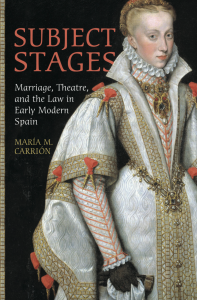I first heard about Open Educational Resources a few years back, when I served as Dean of Graduate Studies and Research at the School of Humanities at The University of Puerto Rico, Río Piedras Campus. One of my many duties as Dean in a public school in a colonial setting going through the direst, most cruel economic crisis the country (or territory, if we’re gonna be crediting things properly) was to negotiate the sheer economic need of most students with their unbelievable hunger for learning and talent for achieving almost anything they sought to do. As I learned about the amazing opportunities OERs offered students, I also learned about the constraints and the little financial gain authors and owners of ‘property’ (objects, subjects, originals) could enjoy by means of enforcing strict copyright policies. All of that seasoned by the fact that I earn NOTHING from any article I publish, although some journals are now asking for thousands of $$$ for me to pay or I sign off my lifetime rights to that article, and my latest book, published beautifully with Toronto UP, thousands of dollars in production, has given back to me a whopping $120 in six years and 1,000 copies sold. UTP owns the world rights to the book, of course…

(© UTP 2010)
Some of the most interesting (albeit not always pleasant) moments I faced as Dean at UPR had to to with my helping students learn about what they could and could not, should and should not, do with OERs. As Michele says, copyright is a big issue in film, and since as both Professor and Dean I work primarily in Humanities, with both verbal and visual materials, that is the story of my life. My courses on architecture, film, theater, performance art, legal history, literature, and mysticism depend heavily in my sharing substantial amounts of materials with my students, and as I work with them so they learn the value of an image or a text, I also work with them so they understand the limits of use, and their responsibility as beneficiaries of this treasure trove of materials that is the Internet. Goes without saying that another big part of my job as an instructor is to help them discern between original and copy (in, for instance, the consultation of an archival material in digital form or at the archive, ‘in person,’ or in watching a theatrical segment filmed for strict educational purposes). Students and faculty in Art History, Cultural Management, Creative Writing, and Fine Arts were particularly restless, as new copyright laws were being brewed to charge for usage of images in their research and teaching.
OERs are critical for virtually every single educational setting today, and it is a complex, vital issue for all faculty members to learn to bring to their students a model to on the one hand enjoy these benefits, and on the other, to respect the limits of their use of those resources. A standard I ask them to observe is to give credit to every text/image/video they cite in their readings, writings, communications, comments, reviews, performance projects, or research papers (whether historical, theoretical, or critical, kinds of evidence they are expected to learn to tell apart in every one of my seminars), and to know that if they EVER use that text of their own (no matter how small, unimportant-looking), if it has a ‘citable’ reference, they must give credit to the author, producer, or owner of that copyright. Platforms such as Blackboard/Canvas have been good in helping me keep lots of these materials within a reasonable frame of educational operation, but I must learn to move to another stage, one in which I must be the one setting the example for students in my classes by giving credit to any and all images, texts, etc. A good part of the job is done, but I have hundreds of images I must credit as I move my materials to Canvas. I am sure that there are lots of questions pending, which will come up as I get ready to expand on my use of OERs.
